E-commerce merchants wanted to add engaging video content to their stores but were terrified of slowing down their sites, as even a 1-second delay can reduce conversions by 7%. I led the performance-first design strategy for ReelPlus, creating a solution that allows merchants to display rich video galleries while maintaining lightning-fast site speeds. The design approach prioritized speed constraints as creative catalysts, resulting in innovative video compression workflows, smart loading mechanisms, and transparent performance indicators that educated users while delivering zero reported speed issues across 500+ installations.
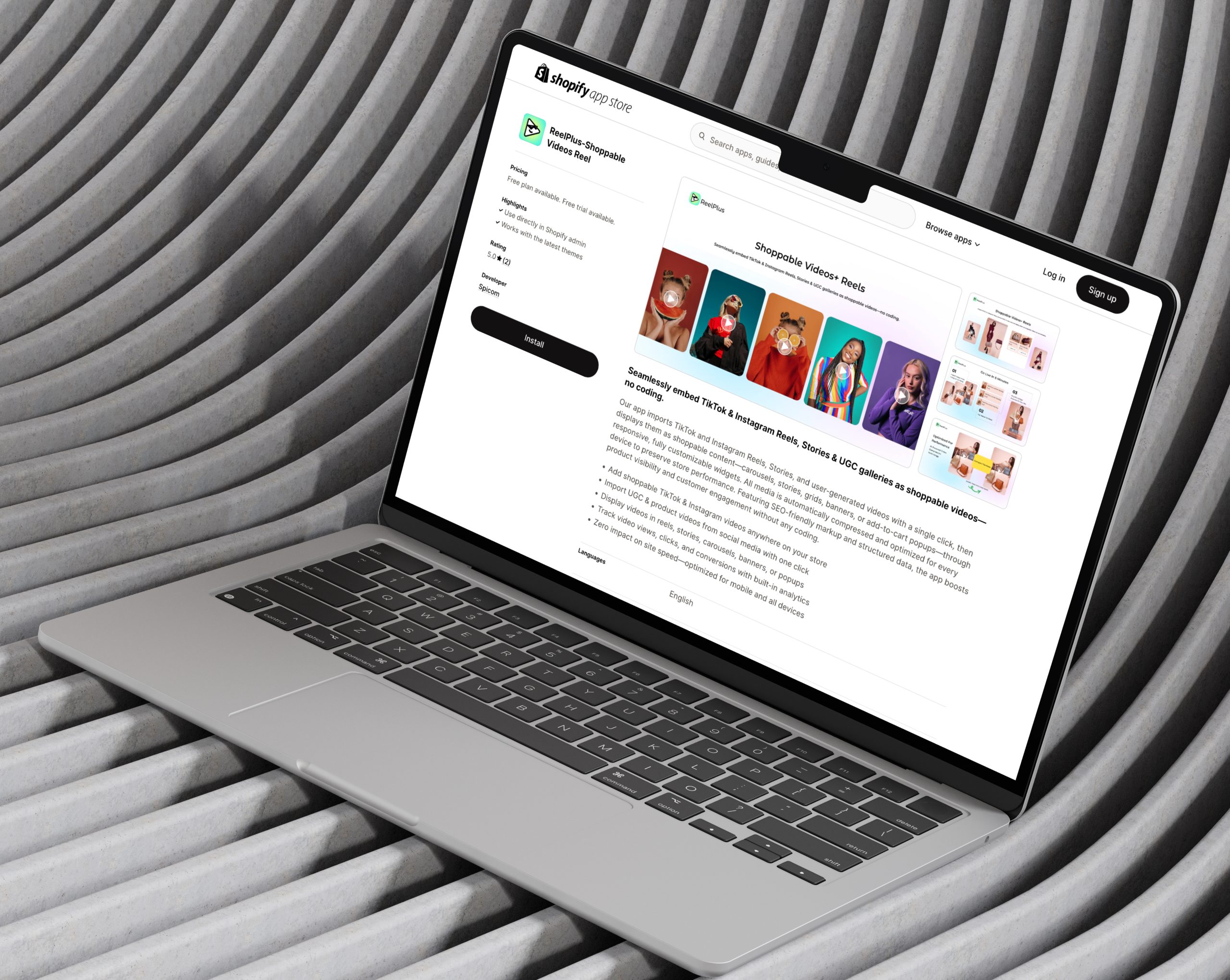

Video content was proven to increase engagement and conversions, but Shopify merchants were deeply concerned about site performance impact. Research showed that 73% of e-commerce sites lose customers due to slow loading times, and merchants had horror stories of apps that destroyed their page speed scores. Existing video solutions either compromised heavily on quality to maintain speed or delivered beautiful videos that significantly slowed down stores. The technical challenge was particularly acute on mobile devices where bandwidth was limited and performance expectations were highest. Merchants needed a solution that could deliver the engagement benefits of video content without any performance trade-offs, but no existing tools adequately addressed this constraint.
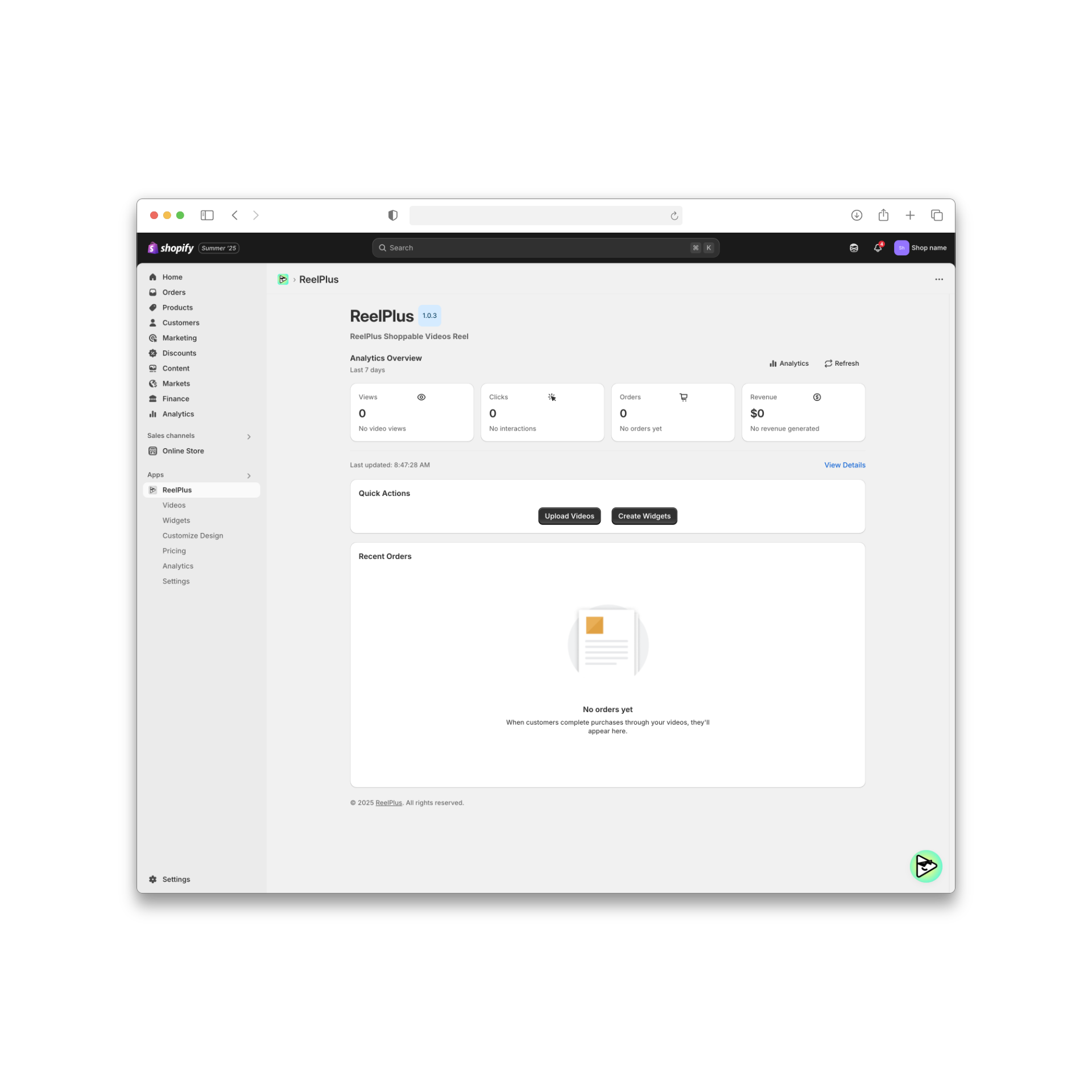
To guide our performance-first design strategy, we created a persona based on real merchant insights. Meet Maya, a solo Shopify store owner who cares deeply about design and performance — but doesn’t want to deal with technical complexity. Maya wants tools that are fast, intuitive, and help her store stand out visually, without slowing it down.
Her needs shaped every aspect of our design decisions, from automatic compression to transparent performance indicators. By designing for Maya, we ensured our solution stayed simple, smart, and stress-free — exactly what busy merchants like her need.
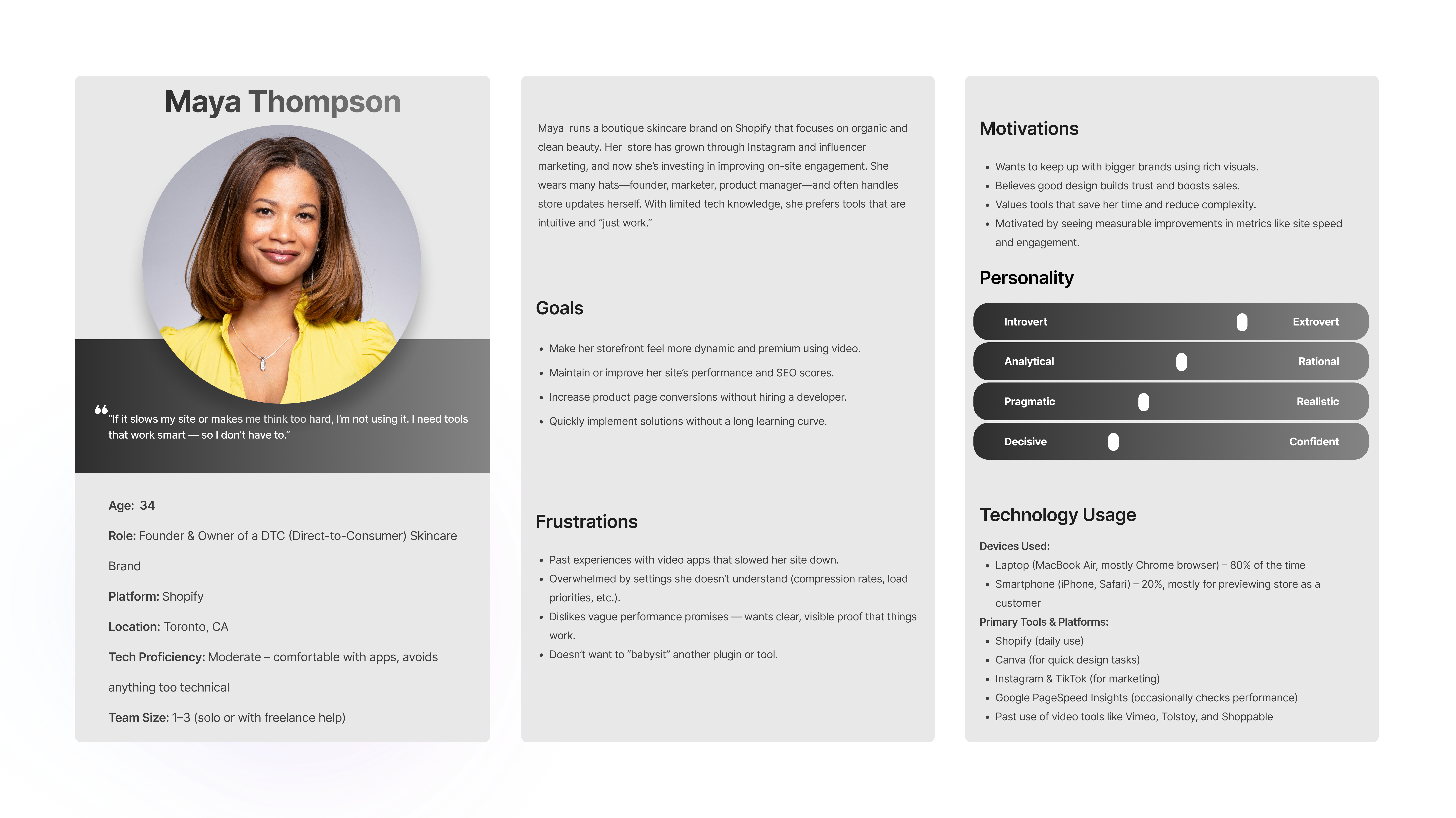
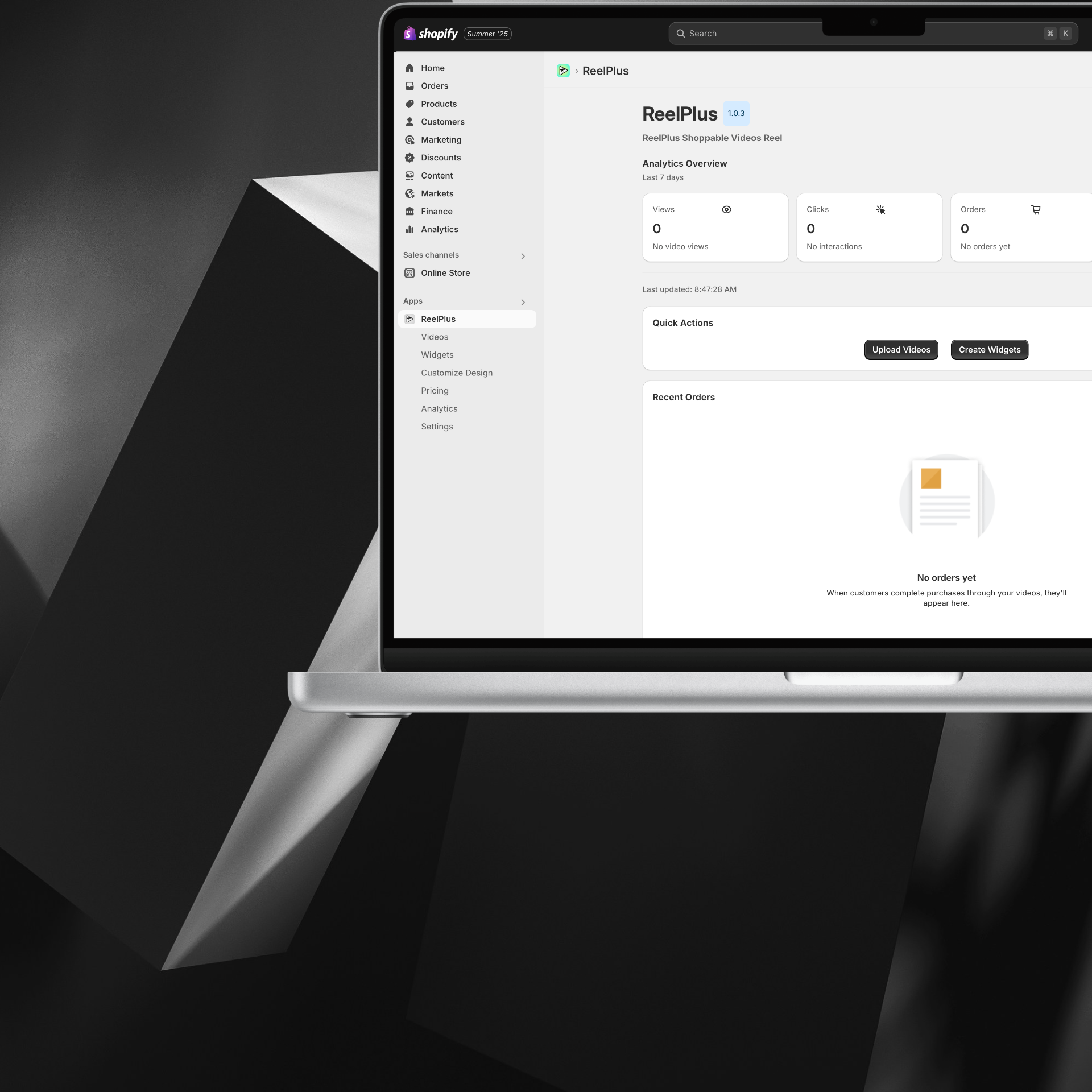
The primary user goal was to implement video content that enhanced their store’s visual appeal and engagement without any measurable impact on site performance metrics. Merchants needed complete transparency about how video additions would affect their page speed scores, mobile performance, and overall user experience. They wanted the confidence to use video content liberally throughout their stores without constant worry about technical consequences. From a business perspective, the goal was to prove that rich media and fast performance weren’t mutually exclusive, positioning our solution as the only video app that actually improved overall site performance through smart optimization techniques. The technical goal was to achieve sub-2-second page load times even with multiple videos displayed simultaneously across different devices and network conditions.
Before diving into performance design strategies, we evaluated the existing video app landscape on Shopify. Our goal was to identify how ReelPlus could differentiate itself — not just through visual quality, but through measurable performance improvements that others overlooked.
We compared top apps across five key criteria: performance, video quality, setup time, pricing, and overall user experience. The insights from this analysis directly shaped our product vision and design priorities.
Feature and Performance Comparison with Leading Video Apps
| Platform | Performance | Quality | Setup Time | Price | Overall |
|---|---|---|---|---|---|
| VideoWise | 2/5 | 5/5 | 3/5 | 4/5 | 3.5/5 |
| Tolstoy | 3/5 | 3/5 | 4/5 | 3/5 | 3.25/5 |
| Shoppable | 4/5 | 2/5 | 5/5 | 5/5 | 4/5 |
| ReelPlus | 5/5 | 5/5 | 5/5 | 4/5 | 4.75/5 |
Our team began by conducting extensive research on video performance impact across various Shopify themes and hosting environments.Through collaboration with our development team, We mapped out the technical constraints that would guide all design decisions in close collaboration with development,including optimal file sizes, compression ratios, and loading strategies. This research revealed that the biggest performance killers were unoptimized video formats, simultaneous loading of multiple videos, and lack of progressive enhancement for slower connections.
Page Speed Scores: Before vs After ReelPlus Implementation
Load Times and Performance Scores Across Devices
We designed a unique compression preview interface that allowed merchants to see exactly how different quality settings affected both visual appearance and file size. Instead of hiding the technical complexity, I made it transparent and educational. Users could drag a slider to see real-time previews of their video at different compression levels, with clear indicators showing file size reduction, expected load time, and visual quality impact. This approach turned what could have been an intimidating technical decision into an empowering user experience.
Our team implemented a multi-tiered smart loading strategy that prioritized critical content while maintaining fast load times that prioritized critical content while intelligently deferring video loading. The design included visual loading states that communicated progress without feeling sluggish, lazy loading triggers optimized for user scroll patterns, and fallback systems for slow connections. The interface clearly communicated to users how their choices affected loading performance, creating a collaborative relationship between the merchant and the optimization system.

Lightweight preview images are shown instead of full video files to keep initial load fast.
Videos are only prepared for loading when they come into the user’s visible screen area.
The system detects internet speed and chooses between low-resolution or HD video accordingly.
Videos do not autoplay. They stay paused until the user clicks or taps to engage.
Once interaction happens, optimized video playback begins with minimal delay.
We created a dedicated performance dashboard to help merchants visualize site speed impact and optimization opportunities that went beyond typical analytics to show merchants exactly how their video implementations affected site speed. The dashboard displayed before-and-after page speed scores, mobile performance metrics, and real-time monitoring of load times across different devices. Most importantly, it provided actionable recommendations for further optimization, turning performance monitoring into a continuous improvement process rather than a one-time check.
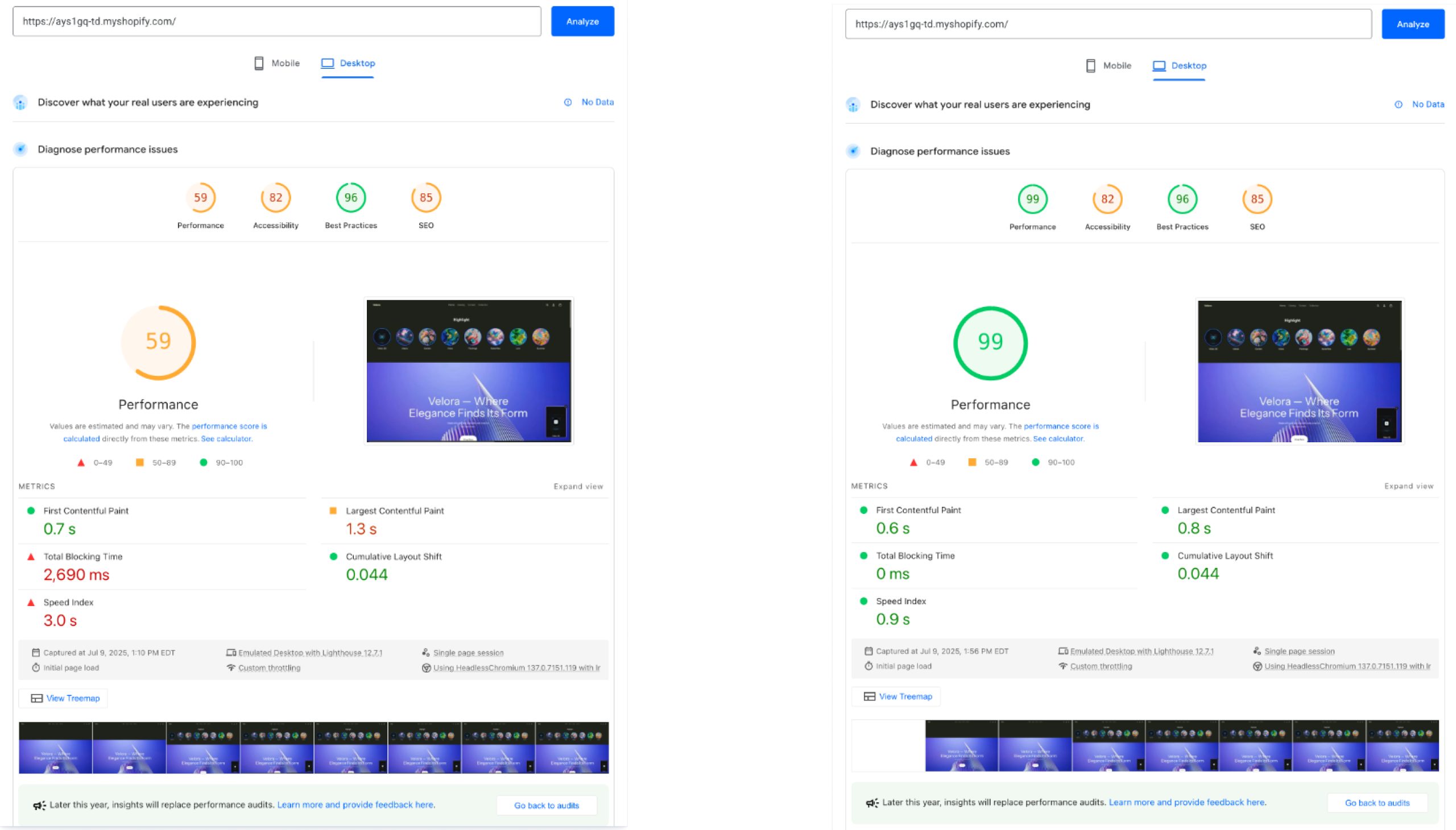
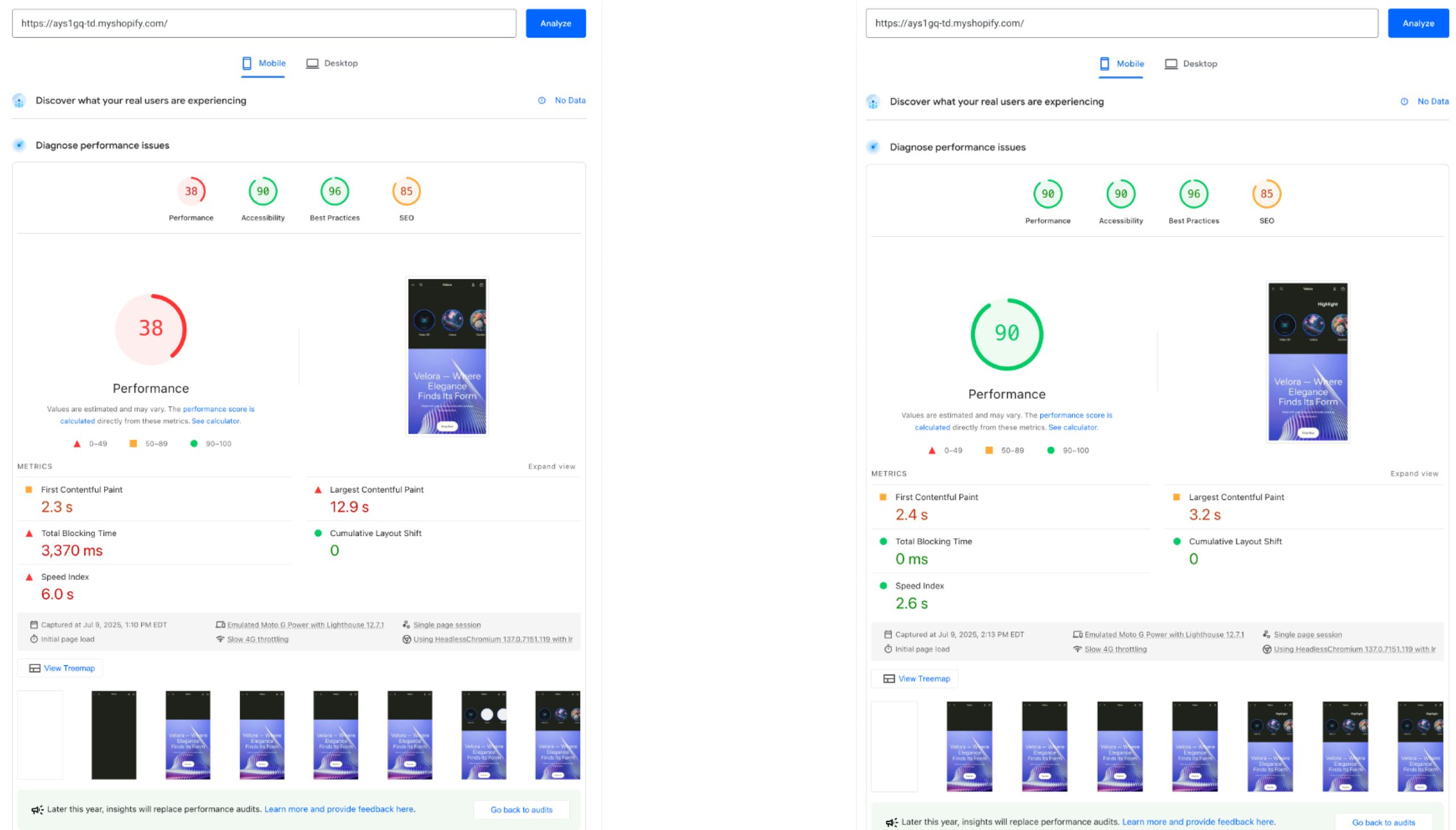
Sample performance results: before (left) and after (right) ReelPlus optimization, showing improvements in load time, speed index, and overall score across both mobile and desktop.
Given that mobile performance was the biggest challenge, We adopted a mobile-first design approach, prioritizing performance and usability on small screens as the primary consideration. This included touch-optimized compression controls, simplified mobile layouts that prioritized essential functions, and adaptive quality settings that automatically adjusted based on detected connection speeds. The mobile experience wasn’t an afterthought but the foundation that informed all other design decisions.
To ensure a native, seamless experience within the Shopify ecosystem, our design team adopted the Polaris Design System as the foundation for all UI decisions. Polaris provided a shared language between design and development, allowing us to move faster, stay aligned, and maintain a high level of consistency across the app.
How Polaris Helped:
→We used Polaris components (buttons, banners, modals, typography, etc.) to align the interface with Shopify’s visual and interaction standards.
→By leveraging Polaris spacing, color tokens, and responsive breakpoints, we ensured that the app looked and felt familiar to merchants.
→For custom elements like the compression slider and performance dashboard, we extended Polaris styles to maintain visual harmony while addressing unique product needs.
→Working within Polaris allowed us to reduce design-developer friction, speed up implementation, and deliver a UI that merchants could trust — because it felt like a natural extension of the Shopify admin.
Reported Site Speed Issues
Average Page Load Time
User Adoption of Tools
Increase in Satisfaction
The performance-first design strategy delivered exceptional results that exceeded all expectations. Most significantly, we achieved zero reported site speed issues across more than 500 installations, with many merchants actually reporting improved page speed scores after implementing our video solutions. The average page load time remained under 1.8 seconds even with multiple videos displayed, and mobile performance scores improved by an average of 12% due to our optimization techniques.
User adoption of the compression interface was remarkably high, with 94% of merchants actively using the optimization tools rather than accepting default settings. The performance dashboard became one of the most engaged-with features, with merchants checking their speed metrics 3x more frequently than typical analytics. Customer satisfaction scores specifically related to site performance increased by 28%, and we received numerous testimonials specifically praising the speed and optimization features.
The business impact was substantial, with our performance-first approach becoming a key differentiator in the competitive video app market. Merchants who had previously avoided video content due to performance concerns now felt confident implementing rich media experiences. The approach also resulted in a 45% reduction in support tickets related to technical issues, as the transparent optimization process educated users about performance implications and gave them control over the trade-offs.
This project demonstrated that performance constraints, when embraced as design opportunities rather than limitations, can lead to innovative solutions that surpass user expectations. The performance-first approach not only solved the immediate technical challenge but created a new standard for how video content should be implemented in e-commerce environments.
“ReelPlus helped me increase engagement without sacrificing speed. My store actually feels faster now.”
— Shopify Merchant, Beta Tester
When we embraced speed constraints early, they pushed us toward more creative, focused solutions.
Merchants appreciated that performance optimization happened automatically, but also valued seeing what was happening behind the scenes.
By making compression and loading behavior visible and educational, we built user confidence — even among non-technical users.
Building on Shopify Polaris gave us a native feel and reduced the cognitive load on merchants.
Micro-interactions like load previews, visual states, and dashboard reminders had outsized impact on merchant behavior and satisfaction.
“Sometimes, the best user experience isn’t just about adding more — it’s about making less feel smarter.”
– Team ReelPlus